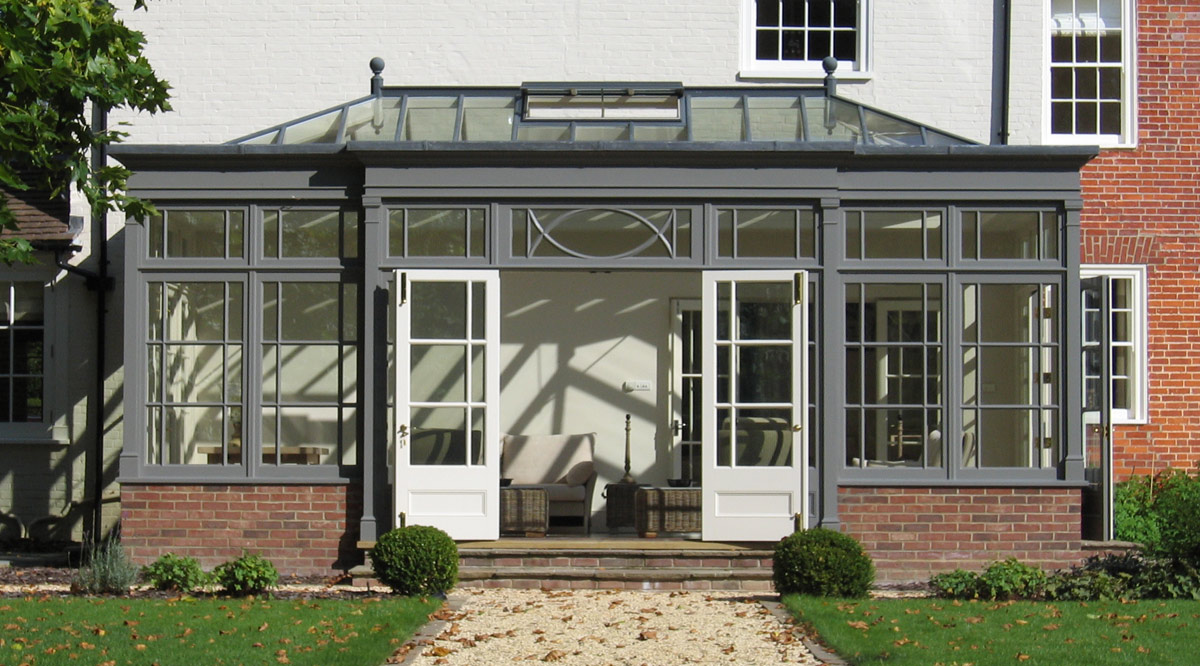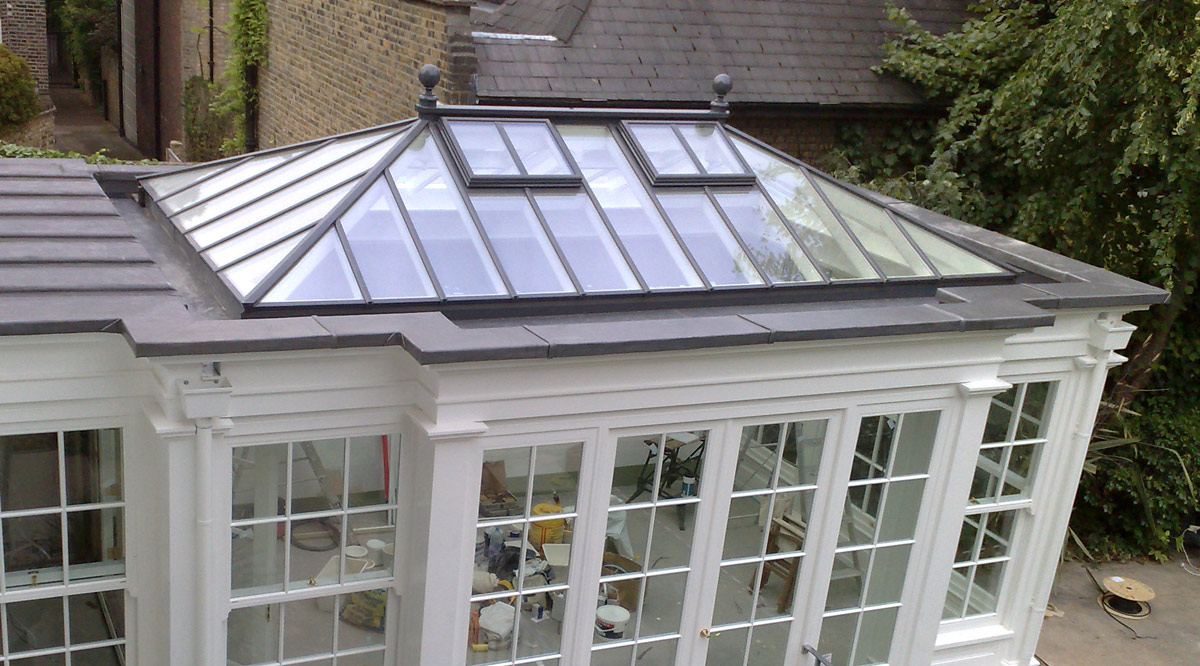5 Things to Consider When Choosing a Conservatory Material
Our hardwood conservatories remain the primary design inspiration for all of our conservatories and skylights. However, especially with the detailing that we can offer, aluminum is a close second. We hope to provide you the information on conservatory building material that will help you to make the best choice.
1. DETAILS
Hardwood offers infinite variability in conservatory design. The fine wood framing details create unlimited possibilities. Curves and corbels, molded door panels and custom carved moldings and more have a softness and grace that the wood provides.
The details offered on aluminum conservatories offer a similarity to hardwood. Yet, the look cannot rival hardwood. Advances in aluminum extrusion allow for many details: ogee profile rafters, fluting, rake molding, and pilasters add traditional conservatory touches.


2. COLOR & FINISHES
In general, hardwood conservatories have a softer feel, particularly for interiors. For aluminum, low gloss paints create a softer finish.
Natural finishes highlight the conservatory building materials. European Oak and American White Oak offer wonderful a wonderful wood gain pattern. It is possible to line an aluminum conservatory in wood. The cost then becomes comparable to a hardwood conservatory.
There are 40 standard colors for hardwood, 6 for aluminum, and custom colors for both. Custom color in hardwood typically costs $610. Custom color in aluminum is easily several thousand dollars.
Hardwood and aluminum can have different colors on the inside and outside. There is essentially no cost for this for hardwood. The client is responsible for the finish coat on the inside of hardwood. Whereas, the factory cost for different interior on aluminum is much more expensive.

3. WINDOWS & DOORS
There are certain design limitations for both materials. Hardwood door sizes are best limited to 6’8” to 7’2” maximum. Casement opening windows are better suited to aluminum frames where crank hardware, which is not traditional, is not unexpected.
Glazing bar patterns including applied lead are virtually identical. True-divided lights are offered in either system.
4. ENGINEERING
There are no practical engineering limits for either conservatory frame material. Steel supports and aluminum frames integrate better for large open spans for commercial size spaces. Hardwood offers better concealment of steel support for small and mid-sized buildings.
5. ORANGERIES
Orangeries are increasing in popularity. They combine the solid feel of a room addition and the openness of a conservatory. Since the orangery has a perimeter of flat roof area with box gutters, these designs are more suitable to hardwood than aluminum because of the soffiting that is required under the flat roof area.

An aluminum conservatory is the default choice for:
-
Most pool enclosures
Pool enclosures are high humidity areas. However, smaller exercise pools do not produce as much condensation as full-size pools. Therefore, material usage is flexible. Unusual shapes or frame details may require hardwood construction.
-
Growing spaces
Maintenance, high moisture (and thus stress on the glass), and the reduced likelihood of mold call for aluminum. However, hardwood buildings with inset aluminum side window frames have excellent weep drainage when simulated divided lights are used. Special greenhouse paint can be specified for hardwood interiors. In temperate climates, exceptional detail warrants the use of hardwood for single glazed greenhouses. Hardwood will be more expensive than aluminum.
-
Commercial
Especially were fire codes dictate non-combustible frames and panic hardware and cost and maintenance are prime considerations.
-
Coastal locations
Engineering for hurricane zones, with appropriate testing data is more available than for hardwood. Either structure can meet required wind loads.
-
Absolute minimum maintenance required
Maintenance on hardwood includes routine painting on the side frames and interior. However, many hardwood conservatories have an aluminum capped roof and aluminum exterior muntin bars that reduce maintenance.
-
Cost
Aluminum typically costs 10-15% less than hardwood. Hardwood interior lined aluminum frames generally cost the same as all hardwood.
Learn more about the possibilities for your project feel free to call us at 773-281-1212 or email inquiries@townandcountryus.com


